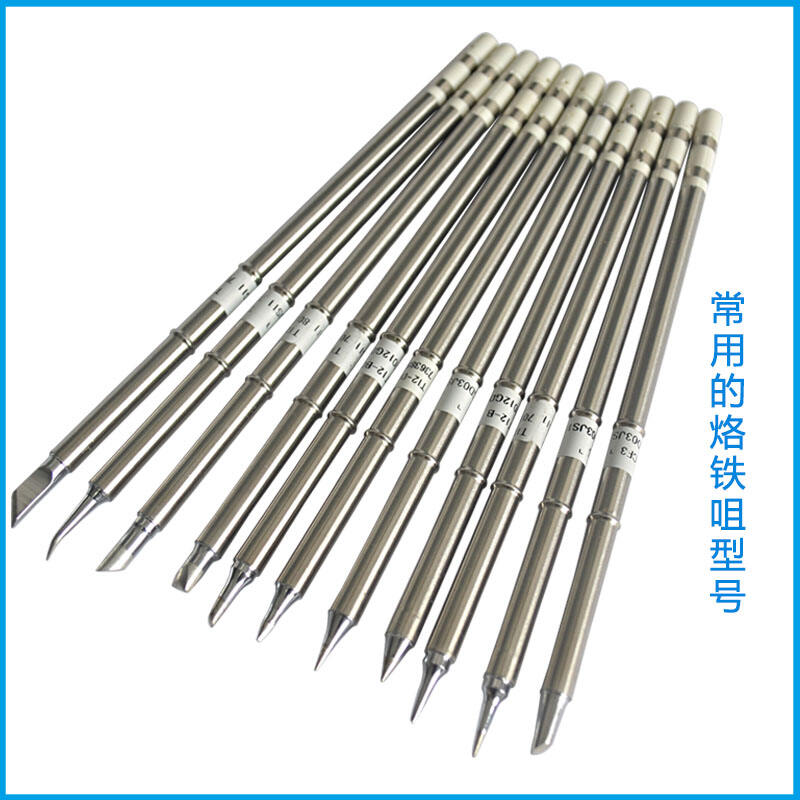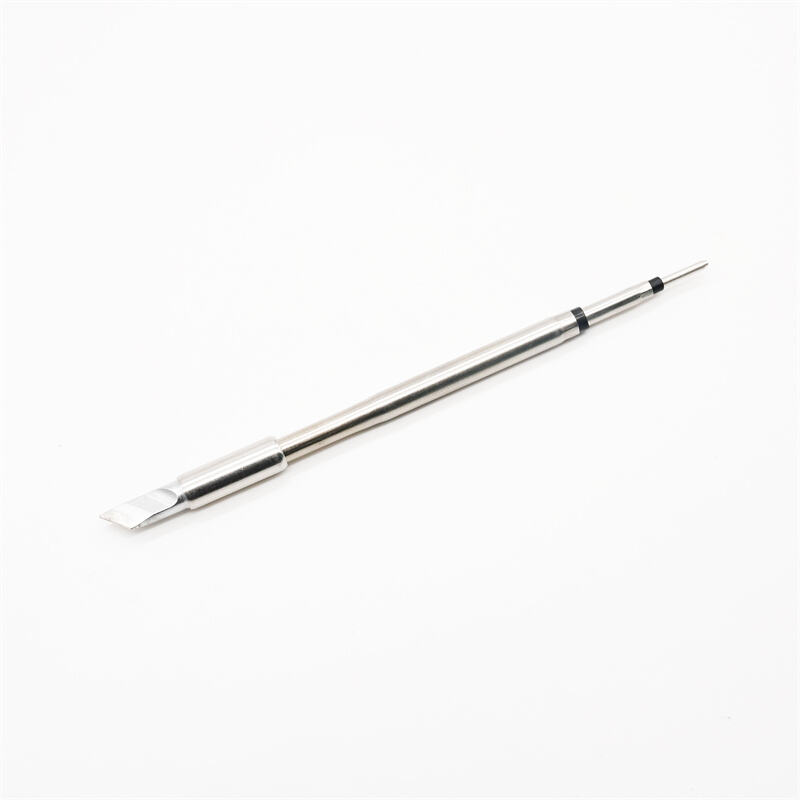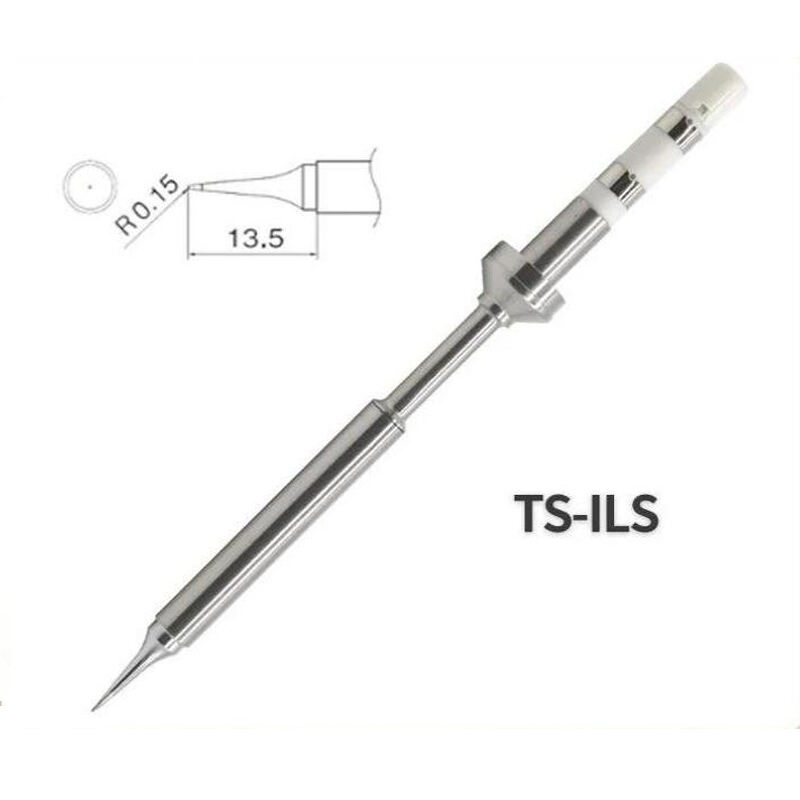Excessive heat is a major concern for soldering tip longevity, as it accelerates oxidation, leading to reduced performance and frequent replacements. When the temperature of a soldering iron exceeds the optimal range, the iron-plated surface of the solder tips oxidizes rapidly, compromising its effectiveness and durability. Studies have shown that maintaining an optimal temperature can significantly reduce the rate of oxidation and wear. For hobbyists and professionals alike, using digital settings on modern soldering irons can precisely manage temperatures, preventing overheating and extending tool life.
Accurate control of temperature is crucial, especially when switching between solder types like lead-free solder, which requires higher heat for effectiveness. Tools without proper temperature control can inadvertently overheat tips, shortening their lifespan and affecting work quality. Transitioning to temperature-controlled soldering stations is a cost-effective solution to manage oxidation efficiently.
Microprocessor-controlled soldering stations provide enhanced temperature stability, essential for extending the lifespan of soldering tips. These advanced stations allow real-time adjustments to optimize thermal conditions, thereby ensuring consistent heat distribution and preventing hotspots that lead to premature wear. This smart technology utilizes sensors on the soldering tip to regulate power flow, maintaining a constant temperature and safeguarding the workpiece from erratic temperature changes.
The benefits of these smart soldering stations go beyond prolonging tip life—they also enhance the precision and safety of soldering practices. By minimizing oxidation through controlled heat application, users can achieve greater efficiency and durability in their soldering machinery. Transitioning to microprocessor-controlled systems is invaluable for professionals seeking reliability and performance consistency in soldering applications.
Brass wool is superior to damp sponges for cleaning soldering tips as it effectively removes oxidation without introducing moisture that can lead to more oxidation. While damp sponges can cool the tip and cause thermal shock, brass wool maintains the metallic integrity of the tip by providing gentle cleaning that prevents excessive wear and tear. Research indicates that using brass wool significantly extends the lifespan of soldering tips by minimizing thermal shock. Moreover, integrating brass wool into your cleaning routine can reduce the frequency of tip replacements, thus saving time and costs in both professional and hobby soldering environments.
Tinning soldering tips after cleaning is crucial for creating a protective layer that prevents oxidation, thus enhancing the lifespan of the tips. By consistently applying this technique after every cleaning session, users can ensure optimal soldering efficiency and longevity of their equipment. Experts recommend regular tinning as it enhances heat transfer and guards against corrosion. Maintaining a tinning routine can lead to a notable decrease in tip wear, as observed over extensive soldering sessions. With each session of proper tinning, soldering tips remain effective, ensuring better heat transfer and reduced risk of oxidation, which aligns with best practices endorsed by soldering professionals.
The T12 series soldering tips offer an all-in-one heating design that ensures durability and consistent temperature control, reducing wear and extending the lifespan of the tips. Constructed from high-grade materials, these tips provide excellent thermal conductivity and resilience, outperforming standard alternatives. User feedback and research data reveal that T12 tips can last up to 50% longer than traditional soldering tips, offering significant cost savings and efficiency for soldering operations.

The C245 series soldering tips are engineered for high-demand professionals seeking precise thermal efficiency. These tips excel in maintaining temperature stability under heavy use, essential for challenging tasks like SMD components or ground plane soldering. With superior resistance to oxidation, the C245 series ensures sustained performance levels, differentiating itself from lower-end models. Studies have shown that soldering experts notice substantial improvements in durability and performance with the C245 series during extended high-temperature operations.

For intricate soldering tasks requiring meticulous precision, TS-100 precision tips offer unparalleled accuracy and heat transfer. Specifically designed for detailed electronic work, these tips maintain consistent temperatures to prevent overheating, thus extending their lifespan. Crafted from durable materials that resist oxidation, TS-100 tips are favored by industry professionals for improving project outcomes and reliability in fine-detail work applications.

Tinning soldering tips before storage is crucial as it prevents oxidation and corrosion, significantly extending their lifespan. Applying a light coat of solder acts as a protective barrier against environmental factors that induce wear and tear. Expert soldering professionals agree that regularly tinning tips after each use is essential to keep them in prime condition, ensuring their functionality when not in use. This proactive maintenance not only safeguards the tip surface but also enhances the efficiency and quality of subsequent soldering efforts.
Storing soldering tips in a dry and controlled setting is imperative for minimizing moisture-related oxidation. Maintaining a moderate temperature while avoiding exposure to dust results in longer-lasting soldering tools. Following climate-controlled storage recommendations from soldering equipment manufacturers ensures tips remain in optimal condition for extended use. Implementing these storage practices can lead to better functioning tips, benefiting precise and efficient electronic work for both seasoned professionals and hobbyists alike.
 Hot News
Hot News